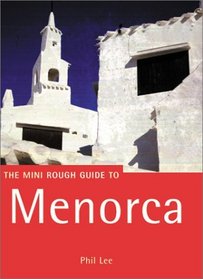Search -
The Mini Rough Guide to Menorca
The Mini Rough Guide to Menorca
Author:
INTRODUCTION Often and unfairly maligned as an overdeveloped, package-tourist nightmare, boomerang-shaped Menorca is, in fact, the least developed ? and second largest member of ? the Balearic Islands, an archipelago to the east of the Spanish mainland which also comprises Mallorca, Ibiza and Formentera. Unlike its neighbours, Menorca remains... more »
Author:
INTRODUCTION Often and unfairly maligned as an overdeveloped, package-tourist nightmare, boomerang-shaped Menorca is, in fact, the least developed ? and second largest member of ? the Balearic Islands, an archipelago to the east of the Spanish mainland which also comprises Mallorca, Ibiza and Formentera. Unlike its neighbours, Menorca remains... more »
ISBN-13: 9781858287089
ISBN-10: 1858287081
Publication Date: 9/10/2001
Pages: 288
Edition: 1st
Rating: ?
ISBN-10: 1858287081
Publication Date: 9/10/2001
Pages: 288
Edition: 1st
Rating: ?
0 stars, based on 0 rating
Genres:
- Travel >> Europe >> General
- Travel >> Europe >> Spain >> Balearic Islands
- Travel >> Europe >> Spain >> General
- Travel >> Reference
- Travel >> Travel Writing




